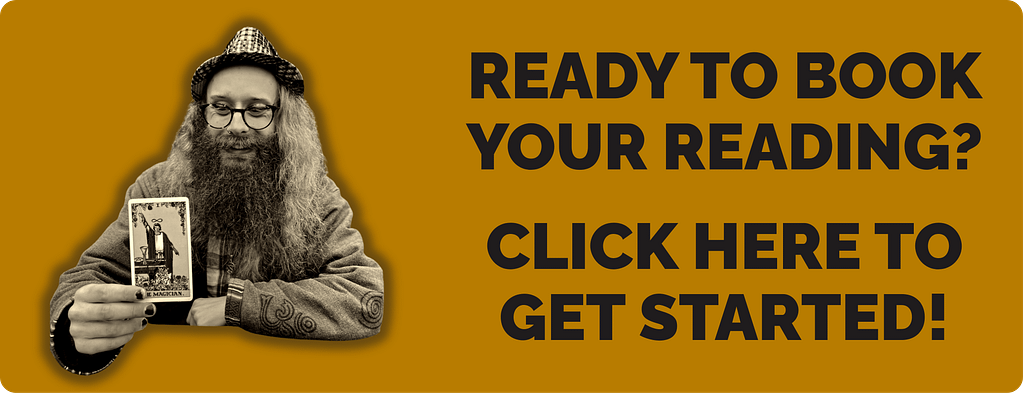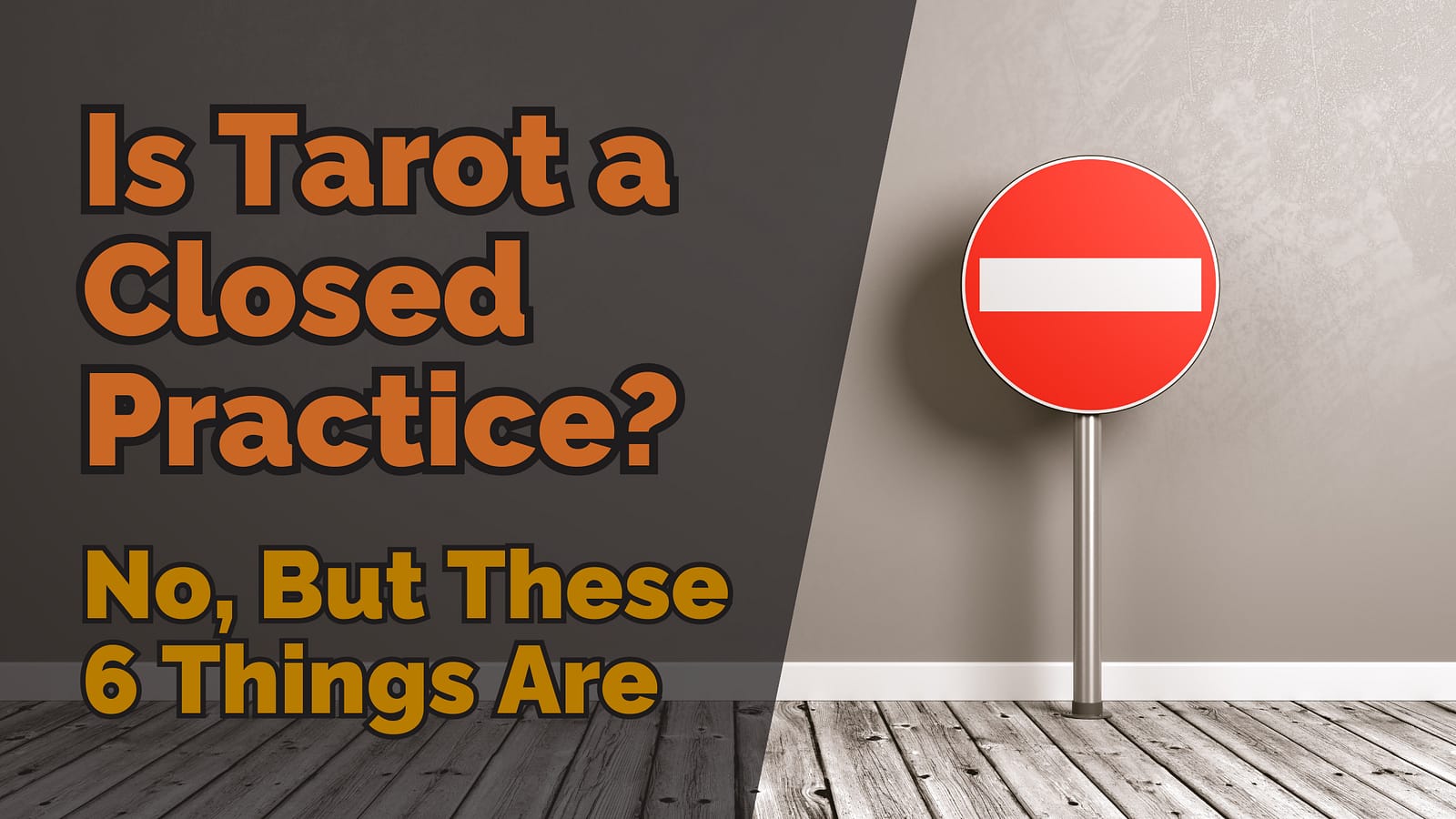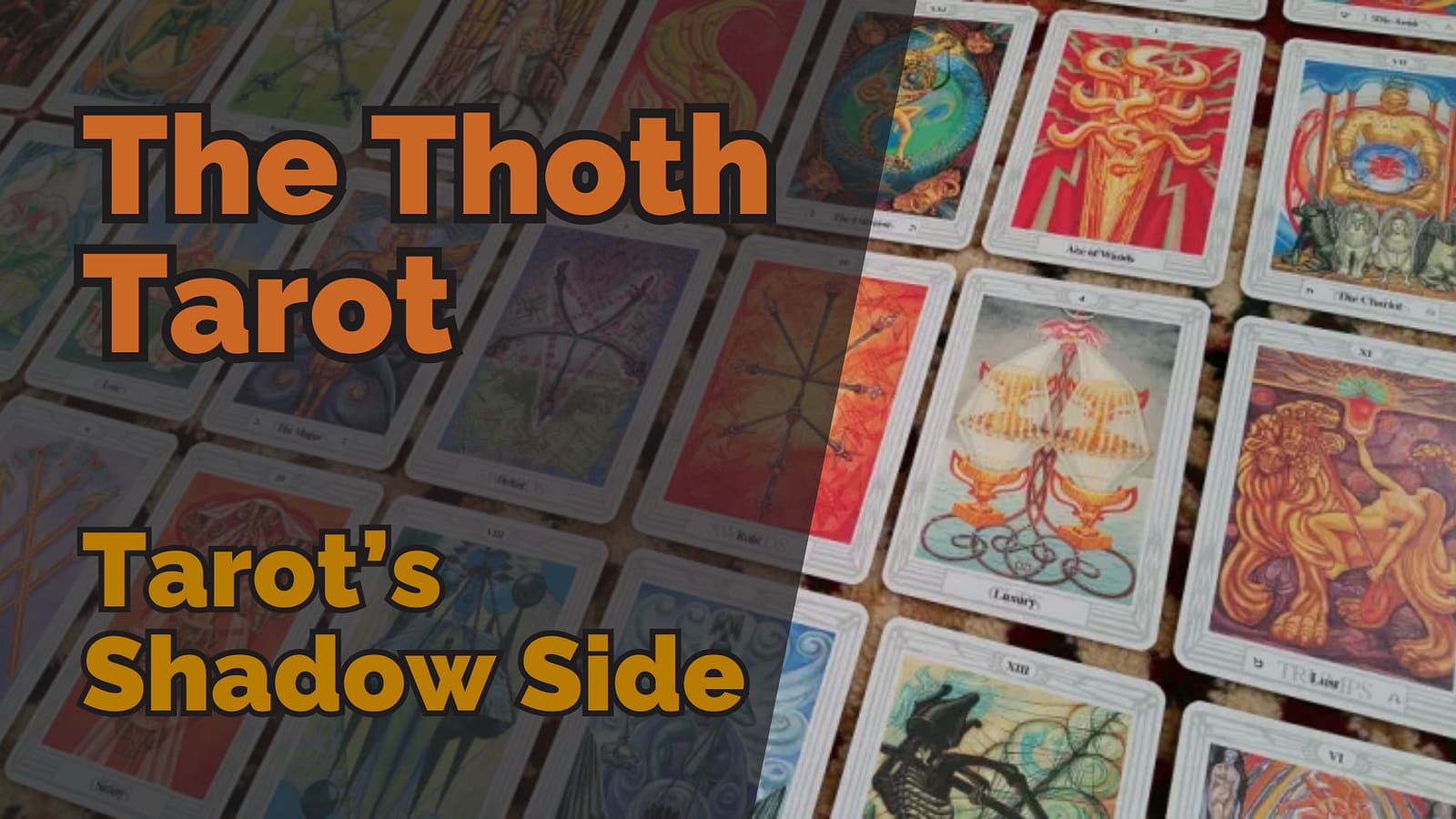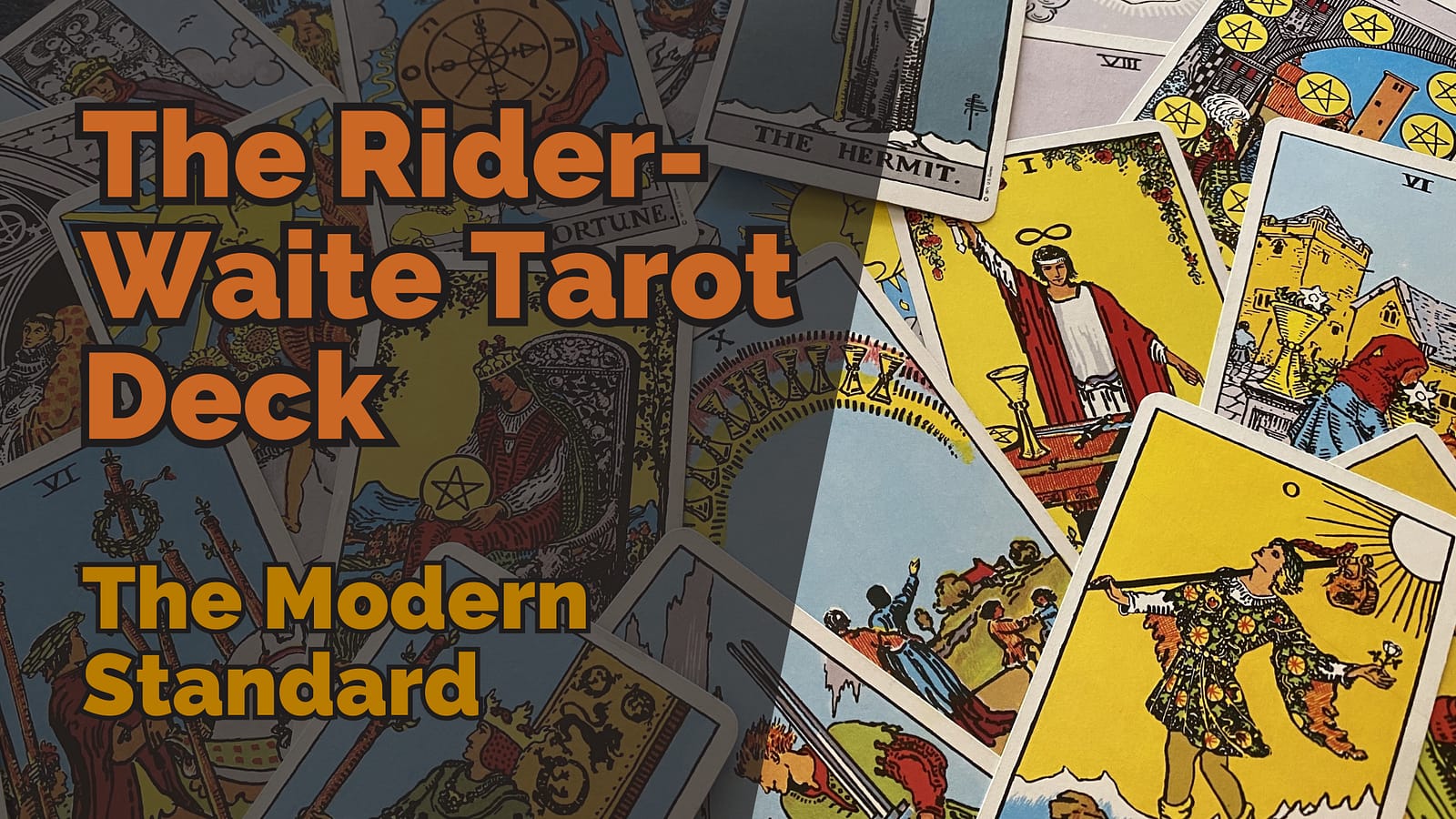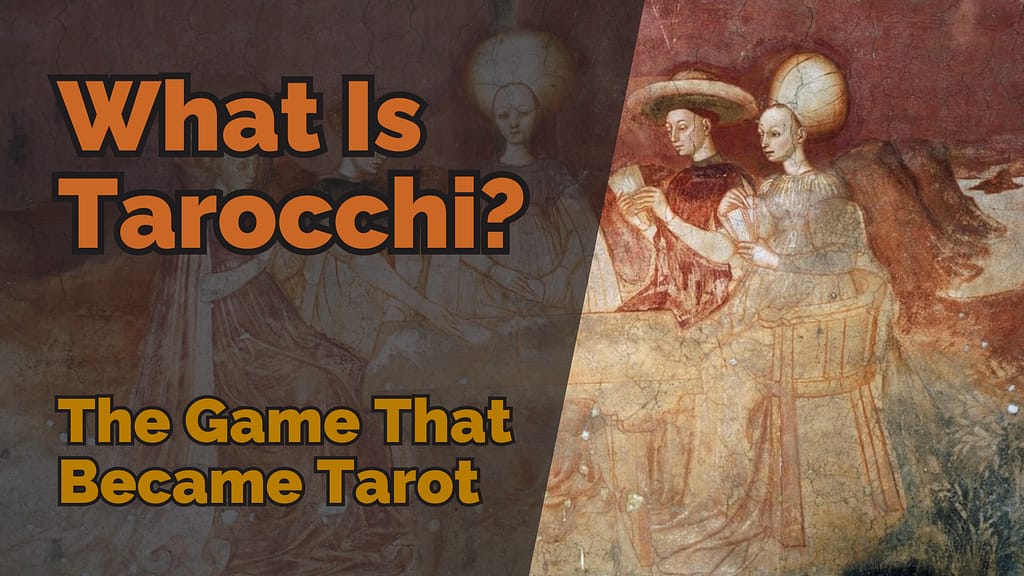
Table of Contents
Most people think tarot has always been mystical. A tool for divination, self-reflection, and a bit of mystery. But before tarot became a symbol of spiritual insight, it was something far simpler and far more social: a game. Tarocchi (pronounced ta-ROK-kee) is the Italian card game that eventually evolved into the tarot we know today. And yes, you can still play it.
I sometimes use tarocchi as a teaching tool in my tarot courses and circles. It’s fun, competitive, and surprisingly educational. Playing it helps people get a feel for the cards as a system rather than as symbols, and it’s a brilliant way to start recognising patterns, especially when learning to read Roman numerals on the cards. It also reminds us that tarot began as something playful and human long before it became spiritual.
Tarocchi began in northern Italy during the 1400s, centuries before anyone pulled a card to ask the universe for guidance. The same system of cards that now lives on reading tables once filled the hands of nobles and courtiers, who used them to play clever, competitive games. It’s a glimpse of tarot’s roots, felt at the table with laughter, rivalry, and a touch of strategy.
What Is Tarocchi?
Tarocchi is a trick-taking card game played with a deck of 78 cards. Sound familiar? That’s because the modern tarot deck kept the same structure. There are four suits: Cups, Coins (or Pentacles), Batons (or Wands), and Swords, each with numbered cards and court cards, plus an extra set of special cards called trumps. Those trumps are the origin of the Major Arcana, cards like the Fool, the Lovers, Death, and the World.
The word tarocchi is Italian for tarots, and it comes from an earlier term, trionfi, which means “triumphs.” These were special cards that ranked above the ordinary suits. Over time, the name changed, but the idea stayed: a game of triumphs and strategy, where allegorical figures decided your fate.
The Origins of the Tarocchi Game

Tarocchi emerged during the Italian Renaissance, probably in the courts of Milan or Ferrara. Early decks like the Visconti-Sforza and the Brambilla were hand-painted works of art, commissioned by wealthy families. Each card was a miniature painting filled with symbolism and social commentary, not unlike how we interpret them today, just with less talk about destiny.
At first, these decks were simply called carte da trionfi, or triumph cards. They were designed for a new type of game that blended the familiar four-suit playing cards with an extra set of trump cards. These trumps depicted virtues, rulers, and mythological or allegorical figures, reflecting the Renaissance fascination with philosophy, morality, and the divine order of things. By the 1500s, trionfi had become tarocchi, and the game spread through Italy.
How to Play Tarocchi
Tarocchi is a trick-taking game that can be played with any tarot deck, though it feels especially at home with a Marseille or Visconti-style set. It’s usually played with four people, often in teams of two, and it’s loud, funny, and just chaotic enough to keep everyone on their toes. The goal is to win tricks and collect high-value cards, but mostly it’s about learning the flow of the deck in motion.
Setup
Each player is dealt an equal number of cards. In some regional versions, the dealer sets aside a few cards called the talon (or scarto). The dealer may look through these leftover cards and swap the same number from their hand, placing their discards face down in their own scoring pile. For casual games, it’s fine to skip this step and just deal the entire deck evenly.
Gameplay
The player to the dealer’s right leads the first trick and can start with any card, a suit card (Minor Arcana) or a trump (Major Arcana). After that, whoever wins a trick leads the next one. Cards are played face up in the middle of the table, and when a trick is complete, the winner collects those cards and places them face down in a separate pile. These won cards stay out of play until the end of the game when you count scores.
Players must follow suit if they can. If they can’t, they must play a trump if they have one. If they have neither, they can discard any card. The highest trump wins the trick, or if no trumps are played, the highest card of the led suit wins.
The Fool is unique. It’s called an excuse because it can be played at any time instead of following suit. It doesn’t win the trick, but you get to keep it. At the end of that round, you give the winner a low-value card from your hand in exchange. It’s a clever little escape that often gets a laugh when played at just the right moment.
Scoring
Scoring in tarocchi is simple once you know the values:
- King – 5 points
- Queen – 4 points
- Knight – 3 points
- Page – 2 points
- The Fool – 5 points
- The Magician – 5 points
- The World – 5 points
- All other trumps and numbered suit cards – 1 point each
At the end of the game, everyone adds up the points from the cards they have won. The player or team with the highest total wins.
Why It’s Worth Playing
When I bring tarocchi into my teaching, I’m not fussed about perfect scoring systems or regional quirks. What matters is how it makes people see the deck differently. The trumps stop being abstract symbols and become part of an unfolding story. The suits start to show their rhythm. Everyone ends up laughing, competing, and quietly learning how tarot actually works, not just as a language of meaning but as a living, playable system.
From Tarocchi to Tarot
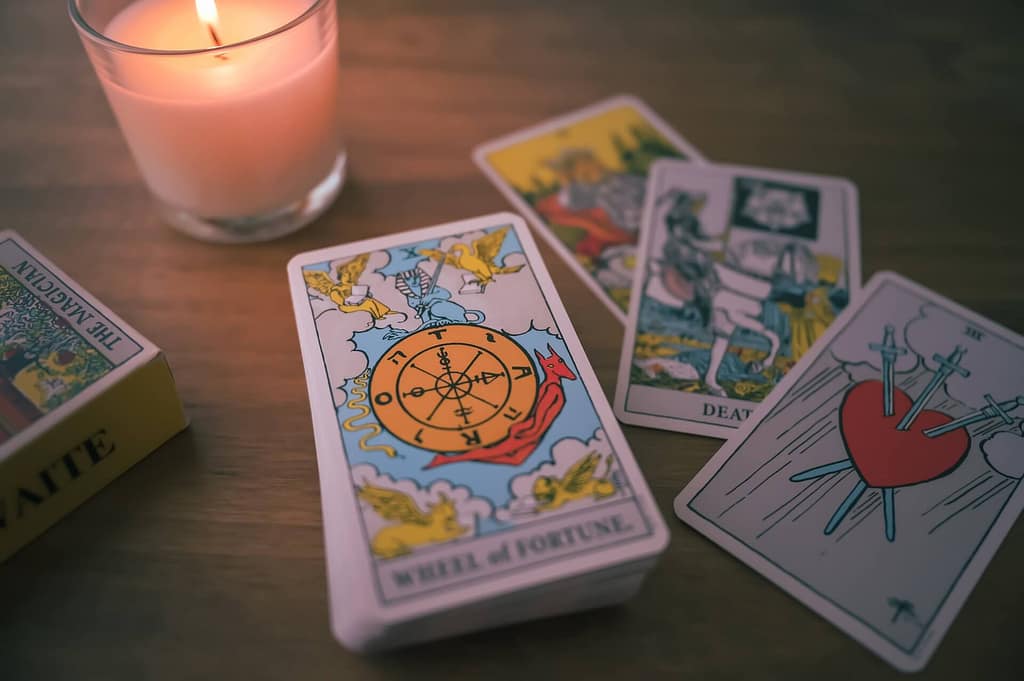
As the centuries rolled on, the game spread beyond Italy. In France, it became tarot, and from there, versions appeared across Europe. Regional variants took shape: Tarocchini in Bologna, Tarocco Piemontese in Piedmont, Tarocco Siciliano in Sicily. Each region added its own flavour, adjusting the rules and even the number of cards in the deck.
Then, in the 18th century, something curious happened. French occultists began to see deeper meaning in the cards. Writers like Court de Gébelin claimed the imagery held ancient Egyptian wisdom. The game became a spiritual tool, its allegories reinterpreted as mystical archetypes. Tarot as divination was born.
The truth is less glamorous but more interesting. The images that became sacred symbols started as playful reflections of society and fortune. The Magician wasn’t always a conduit of cosmic energy; he was a street performer. Death wasn’t a prophecy, just the great leveller. Tarocchi’s trumps were, in a sense, the Renaissance meme set, commentary on human experience dressed in paint and gold leaf.
Why Tarocchi Still Matters
For tarot readers, understanding tarocchi gives the cards a kind of grounding. It reminds us that before they were mystical, they were human. They belonged to art, intellect, and play.
Tarocchi is still played today in parts of Italy. In Bologna, locals gather for Tarocchini, a fast-paced version that uses a 62-card deck. In Piedmont, the Tarocco Piemontese version is still popular. There are even tournaments and televised matches. The game survived quietly alongside tarot’s spiritual rise, proof that its playful spirit never really died.
When I use tarocchi in teaching, it’s less about mastering every rule and more about learning the cards themselves. Playing helps students recognise patterns, memorise numbers, and understand the flow between suits and trumps. It turns study into experience, a fun, competitive way to get familiar with the deck and see how each card fits into the bigger picture.
Conclusion
Tarocchi is the missing link between the game and the guide, the playful and the profound. It began as entertainment, but its imagery outlived the laughter. The next time you pick up a tarot deck, remember that you’re holding a piece of Renaissance history, a game of triumphs, fate, and folly that eventually found its way into our search for meaning.

